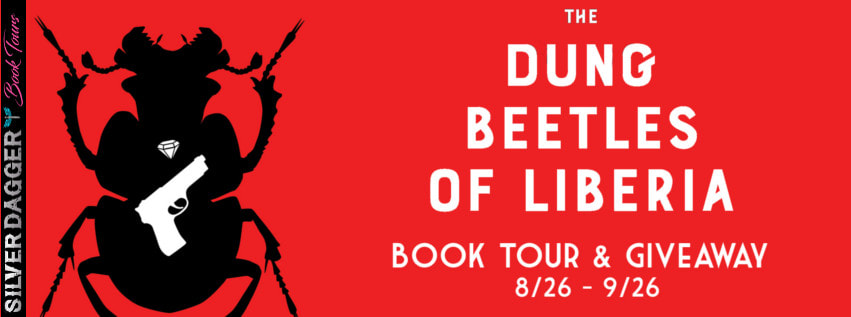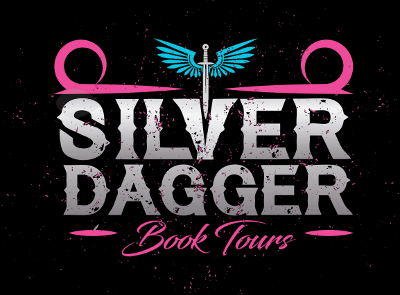The Dung Beetles of Liberia by Daniel V. Meier Jr. Book Tour and Giveaway :)
The
Dung Beetles of Liberia
by
Daniel V. Meier Jr.
Genre:
Adventure, Historical Fiction
Based
on the remarkable true account of a young American who landed in
Liberia in 1961.
Ken
Verrier is not happy, nor at peace. He is experiencing the turbulence
of Ishmael and the guilt of his brother's death. His sudden decision
to drop out of college and deal with his demons shocks his family,
his friends, and especially his girlfriend, soon to have been his
fiancee. His destination: Liberia - The richest country in Africa
both in monetary wealth and in natural resources.
Nothing
could have prepared Ken for the experiences he was about to live
through. He quickly realizes that he has arrived in a place where he
understands very little of what is considered normal, where the
dignity of life has little meaning, and where he can trust no
one.
Flying
into the interior bush as a transport pilot, Ken learns quickly. He
witnesses first-hand the disparate lives of the Liberian "Country
People" and the "Congo People" also known as
Americo-Liberians. These descendants of President Monroe's American
Colonization Policy that sent freed slaves back to Africa in the
1800's have set up a strict hierarchical society not unlike the
antebellum South.
Author
Dan Meier describes Ken's many escapades, spanning from horrifying to
whimsical, with engaging and fast-moving narrative that ultimately
describe a society upon which the wealthy are feeding and in which
the poor are being buried.
It's
a novel that will stay will you long after the last word has been
read.
“A short time after hiring
Ku, I went into the kitchen. He was at his waiting station looking at
me. I opened the door to our ancient kerosene-fired refrigerator.
“Wha
you wan, boss? Ku get it fo you,” he said, slipping from the stool
and putting himself between me and the contents of the refrigerator.
“Something
to eat, Ku.”
“No
worry, boss.” Ku said, “We ha good stew, good meat—no bush
meat—and French baguettes, fresh may t’day, from da new market.
Vey goo.”
“Great,
Ku. If you would prepare it, I’ll have it out on the porch. That’s
where I’ll be.” I retrieved a bottle of beer from the
refrigerator, popped it open, and left to find a chair on the porch.
Thirty minutes later Ku brought the stew and several slices from the
baguette. I had been in Africa long enough to have learned that if
something tastes good, don’t ask what it is. However, this time I
thought I’d try:
“This
is great, Ku. A little different, but delicious. What is it?”
Ku grinned. “Oh, boss, don’t
worry. It white man food. I kno why you askin. It no bugabug. It not
time for bugabug.”
“Bugabug?
What’s bugabug?” I asked.
“Bugabug
is wha ya call termites.”
“Termites?
You eat termites?”
“Oh,
yeah, boss. Dey good. But dey only come out two time a year.”
“How
so?”
“Well,
you know they live in de big big mounds. Mounds bigga n me. An every
now and den, de queen, she decides to move. So dey all move. Swarms
and swarms and billions and billions all leave at the same time to
find a new home. An das when evybody go get ’em, cook ’em, and
eat ’em. Dey real good, boss. Kinda tase lie crunchy chickin.”
“Nice
to know, Ku, but when bugabug season comes, I’ll pass.”
A
retired Aviation Safety Inspector for the FAA, Daniel V. Meier, Jr.
has always had a passion for writing. During his college years, he
studied History at The University of North Carolina Wilmington and
American Literature at The University of Maryland Graduate School. In
1980 he was published by Leisure Books under the pen name of Vice
Daniels. He also worked briefly for the Washington Business Journal
as a journalist and has been a contributing writer/editor for several
aviation magazines.
Dan
and his wife live in Owings, Maryland, about twenty miles south of
Annapolis and when he's not writing, they spend their summers sailing
on the Chesapeake Bay.
Diamonds in the Rough
StStar of Sierra Leone By A1gard https://commons.wikimedia.org/w/index.php?curid=79030299
We
all know the term “blood diamonds.” They are diamonds that have
been used to finance African warlords, fund a military coup or
support any rebel faction intent on killing their opposition. During
our hero’s time in Liberia, however, the blood had not yet begun to
flow. It was the 1960’s and the wealthy Americos had an iron grip
on Liberian society and government. That’s not to say that it
wasn’t an extremely dangerous and lucrative business, but the
majority of diamonds were smuggled into Liberia from neighboring
countries.
Liberia,
being an independent republic for over a hundred years, had been
bypassed by the international diamond cartels that set the prices of
diamonds in the rest of the world. All prices in the Republic were
set, therefore, by the local gem market, no matter where they came
from. Liberia was a diamond smuggler’s paradise.
“A
rough diamond might begin its journey a thousand miles to the east by
residing in the bowels of a closely watched native miner who, under
the guns of overseers, would swallow the muddy gems and pass them
later in the night outside the mining area. From as far away as Chad
or Upper Volta, a gem would travel first by overland trails then be
sold surreptitiously to the Mandingos. From there, it would move by
motorized transport or bush taxi to Bamako or Ouagadougou. It would
change hands a few times before beginning the long journey west,
possibly in a chartered taxi with a number of Mandingo merchants.“
Unlike
neighboring Sierra Leone where the country was literally cluttered
with diamond mines, Liberia’s mining business was in its infancy.
What mines they had were far inland and approachable only by air.
They were also all artisanal, which is to say, that it was done with
minimal technology and generally illegal. Countries like South
Africa, on the other hand, had a sophisticated diamond industry and
would tunnel deep below the earth’s surface with heavy
machinery.
.jpg/:/rs=w:1280)
The
actual creation of a diamond begins approximately 100 miles
underground where extreme heat and pressure crystallize carbon into
rough diamonds. Volcanic eruptions, that took place in the Jurassic
era, known as kimberlite pipes, as well as igneous dykes pushed the
diamonds to the surface. So, the search for diamonds starts with the
search for kimberlite. Some say that digging under a termite mound is
a good place to begin as the termites have already dug deep into the
ground revealing the existence, or not, of kimberlite.
Liberia’s
pre-civil war low-tech mining is referred to as alluvial diamond
production, because the search is focused on the soil deposits
created from water flowing over kimberlite flood plains or in
riverbeds. It was wet, back breaking labor in extreme heat, and it
was done by men, women and children. To this day, there are open pits
where workers pan for diamonds. Diamonds are handed over as soon as
they are found in hopes of locating more nearby and, of course, to
eliminate smuggling.
.jpg/:/rs=w:1280)
In
South Africa it was a different story and smuggling was made very
difficult. Some of the mines were like huge concentration camps with
dogs and guards patrolling the perimeter day and night. To leave the
premises, workers’ stomachs would be x-rayed. If a spot was found
by the scanner, he’d be put in the hospital and thoroughly purged.
Many workers would swallow pebbles or nails to see if the “white
man’s magic” really worked. And guess what. It did.
Follow
the tour HERE
for exclusive excerpts, guest posts and a giveaway!









Comments
Post a Comment